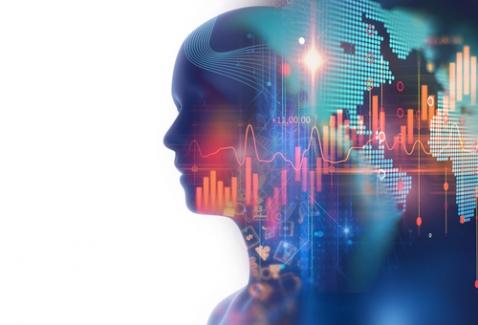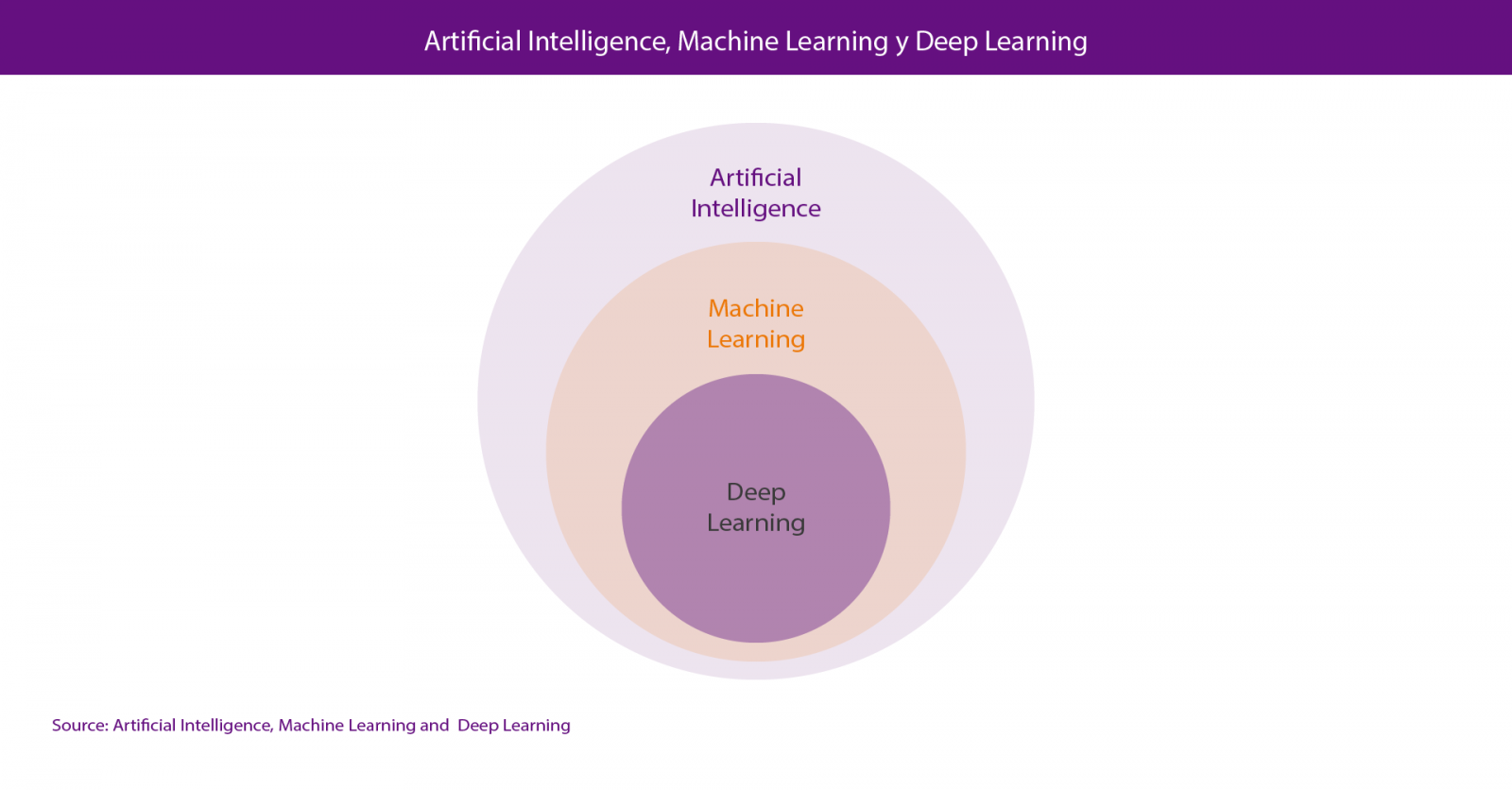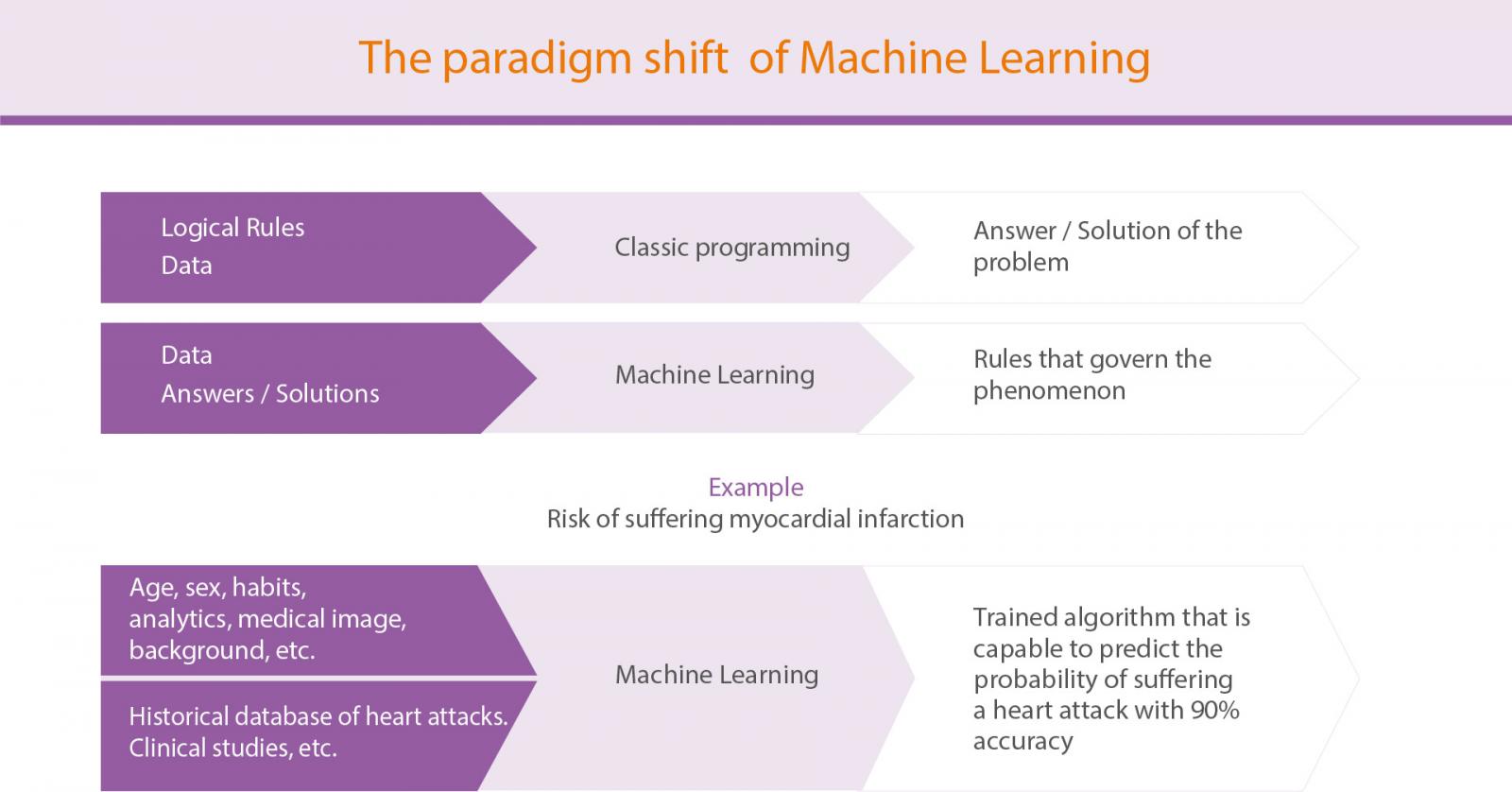
Not all press headlines on Artificial Intelligence are true, but do not make the mistake of underestimating the changes in the coming years thanks to the development of AI.
Artificial intelligence has not yet changed our lives, but we are experiencing a cycle of over-exposure about its results and applications in the short term. The non-specialized media and the marketing departments of companies and other organizations foster a climate of excessive optimism regarding the current achievements in the development of AI.
Undoubtedly, we can all ask our smartphone some simple questions and get reasonable answers. In our online purchases (for example on Amazon.com), we experience the recommendation of personalized products based on our profile as buyers. We can search for events in our digital photographs library hosted in an online service such as Google Photos. With just writing, "mum's birthday" we will get a list of photos of that day with a relatively high precision in seconds. However, the time has not yet come for AI modifying our daily experience when we consume digital or physical products and services. Up to now, our doctor does not use AI to support his diagnosis and our lawyer or financial advisor does not use AI to prepare a resource or better invest our money.
The hot news floods us with photorealistic infographics of a world full of autonomous cars and virtual assistants with whom we talk as if it were a person. The risk of overexploitation in the short term is that, in any development process of a disruptive and exponential technology, technology necessarily fails. This leads to a state of disappointment that entails a reduction of investments by companies and states, which in turn produces a slowdown in the development of such technology. The development of AI is not unconnected to this process and has already known two stages of slowdown. These historical stages are known as the "winters of artificial intelligence". The first winter of the AI took place in the early years of the 1970 decade. After the birth of what today we know as IA - in the decade of 1950 - at the end of the sixties, Marvin Minsky got to assure in 1967 that "... in the course of a generation... the problem of creating an artificial intelligence will be practically solved...". Only three years later, Minsky himself said: "... in three to eight years we will have achieved a machine with an artificial intelligence superior to human beings ..."
Currently, no expert would dare to specify when (if so) this could happen. The second winter of AI arrived in the early years of the nineties. After a period of overexploitation of the then known as "expert systems". Expert systems are computer programs that contain logical rules that code and parameterize the operation of simple systems. For example, a computer program that encodes the rules of the chess game belongs to the type of programs that we know as expert systems. The coding of fixed logic rules to simulate the behavior of a system is what is known as symbolic artificial intelligence and was the first type of artificial intelligence that was developed.
Between 1980 and 1985, companies had invested more than one billion US dollars each year in the development of these systems. After this period, it was demonstrated that these turned out to be extremely expensive to maintain as well as not scalable and with little results for the investment they entailed. The historical journey of t AI development from its beginnings in 1950 to the present is a highly recommended and exciting reading.
What has artificial intelligence achieved so far?
Although we say that we must be prudent with the expectations regarding AI applications in the short term, we must punctuate here what have been the main achievements of artificial intelligence from a strictly rigorous point of view. For this, we will base on the book Deep Learning with R. Manning Shelter Island (2018) by Francois Cho-llet with J.J. Allaire.
- Classification of images at an almost-human level.
- Recognition of spoken language at an almost-human level.
- Transcription of written language at an almost-human level.
- Substantial improvement in the text conversion to spoken language.
- Substantial improvement in translations.
- Autonomous driving at an almost-human level.
- Ability to answer questions in natural language.
- Players (Chess or Go) that far exceed human capabilities.
After this brief introduction of the current historical moment in regarding to AI, we are in a position to define, in a slightly more formal way, what artificial intelligence is and which fields of science and technology directly are affected by its development.
Artificial intelligence could be defined as: the field of science that studies the possibility of automating intellectual tasks that are normally performed by humans. The reality is that the scientific domain of AI is normally divided into two sub-fields of computer science and mathematics called Machine Learning and Deep Learning. The representation of this statement can be seen in Figure 1.

Figure 1. Artificial Intelligence and sub-fields such as Machine Learning and Deep Lear-ning.
We are not going to speak here about technical considerations about the difference between machine learning and deep learning (you can learn more about these concepts in this post). However, perhaps the most interesting is to understand the paradigm shift from the first development of AI based on logical rules to the modern conception of our days, where machines find out those rules that govern a certain process (for example, the risk of suffering a myocardial infarction) based on input data and previous experiences that have been recorded and analysed by a certain algorithm. Figure 2 represents that change of paradigm between the classic programming of logical rules and the machine learning approach.

Figure 2. The paradigm shift to Machine Learning from classical programming.
The fast development of AI in our days is the result of multiple factors. However all experts agree that two of them have been and are key to enhance this third wave of artificial intelligence development: the reduction of computing cost and the explosion of available data thanks to the Internet and the connected devices.
Just as the Internet has impacted, and more than it is going to impact, in all areas of our lives - from the end consumer to the processes and operating models of the most traditional companies and industries - the IA will radically change the way in which humans use our capacities for the development of our species. There is a lot of news about the negative impact that AI will have on jobs positions in the next 10-20 years. While there is no doubt that the automation of certain processes will eliminate some jobs that still exist today, it is no less true that, precisely, the first jobs to disappear will be those jobs that make us "less human". Those jobs that employ people as machines to repeat the same actions, one after another, will be replaced by agents equipped with AI, either in the form of software or in the form of robots equipped with AI.
The iterative and predictable tasks will fall within the exclusive domain of the machines. On the contrary, those tasks that require leadership, empathy, creativity and value judgments will continue to belong only to humans. So, is it done? Do we have nothing else to do but wait for the machines to do part of the work while we do the other part? The answer is no. The reality is there is a big space in the middle of these two extremes.
The space in which the human is amplified by the AI and in return the AI is trained by humans to feed back this intermediate cycle. Paul R. Daugherty and H. James Wil-son, define in his book Human + Machine this space as "The missing middle”. In this intermediate space, AI machines increase human capabilities, make us stronger with exoskeletons capable of lifting heavy loads or restore us the capacity to walk after paralysis; they make us less vulnerable by working in potentially harmful environments such as space, the bottom of the sea or in a pipeline with deadly gases; We increase our sensory capabilities in real time with glasses that carry cameras and sensors that complement our field of vision with overlapping textual information.
With the help of machines equipped with an improved AI, it is not difficult to imagine how the processes and maintenance tasks will change in a factory, the different way in which our fields will be cultivated, how the warehouses of the future will work and the efficiency of our self-managed homes.
In conclusion, let's stop looking at the machines and AI as rivals that will dispute our jobs, and start thinking about how we will merge our most human skills with the superior capabilities of the machines regarding resistance, speed and precision.
Let's do different things now to do different things in the future.
Content prepared by Alejandro Alija, expert in Digital Transformation and innovation.
Contents and points of view expressed in this publication are the exclusive responsibility of its author.